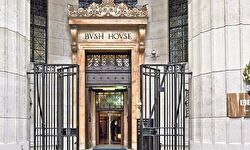
At 11 o’clock this morning, in city centres and on village greens everywhere, large numbers of people will stand quietly, remembering people that they probably never knew. The two-minute silence is unique.
It seems just about as uncontroversial a ritual as you could imagine. It is undisruptive. There is nothing compulsory about it. No one gains from it and no one gets hurt by it.
But what exactly is it for? Does remembering mean much without being linked to action of some kind?
Few expected the Great Silence to survive this long, for there had been a fervent hope that the enormous slaughter of the First World War would be the last of its kind.
The Times had talked optimistically about a collective “voiceless speech”, and its editorial the morning after the first silence asserted that “the great result of the two minutes’ homage will be to teach the nation its general loss”.
The teenaged Evelyn Waugh was scathing, calling the plan “a disgusting idea of artificial nonsense and sentimentality… a disgraceful day of national hysteria”.
If people wanted to remember loved ones they had lost in the war, they should do so “whenever the grass is green, or Shaftesbury Avenue brightly lighted”. It is as dyspeptic as you’d expect from him, but did he have a point?
Though he would not have welcomed the company, there were some on the Left of politics who felt similarly uneasy. In 1921, unemployed former servicemen in Liverpool marched through the streets during the silence, with cries of “What we need is food, not prayers” and “Anyone want a medal?”.
But the Left-wing Daily Herald welcomed the silence as an opportunity. Those taking part should “swear to yourself this day at 11 o’clock, that never again, God helping you, shall the peace and happiness of the world fall into the murderous hands of a few cynical old men”.
Instead, old men turn out at the Cenotaph to lay wreaths. Organisation of the event remains in the hands of the military, with little recognition of the fact that the armies of both world wars comprised civilians, most of whom couldn’t wait to get out of uniform.
Even in 1919, some of those who had fought found the whole thing uncomfortable: one thoughtful veteran, Charles Carrington, thought that marching to the Cenotaph was “too much like attending one’s own funeral”.
In a paunchy age like ours, the Royal family are some of the very few public figures who have worn military uniform. We expect to see City suits and overcoats, as poor Michael Foot discovered when the tabloid press unleashed their yahoos on him for the crime of wearing what they called a donkey jacket. (It wasn’t: his wife had bought the coat for him, and he’d thought it rather smart.)
The obsequies are mainly the business of those who have never had their contented middle-class lives disrupted by having to perform military service. In their well-nourished comfort, our political leaders aren’t so different from the rest of us.
Please don’t misunderstand me. I am not against the two-minute silence. A couple of minutes is a pitifully short period to spend recalling those who lost the opportunity to grow older and see their children grow up.
Silence is such a rare commodity in modern life that it seems even more appropriate today than in 1919. But honouring the lives lost, and recognising that the comforts we take for granted were bought so expensively, surely ought to oblige us to do something more positive than stopping our mouths for 120 seconds.
Britain no longer sends expeditionary forces off around the world to police its empire. It cannot afford to do so, when the entire Army can be accommodated in Wembley Stadium.
Yet, as soldiers returned from two less-than-conspicuously successful missions in Afghanistan and Iraq know, American presidents have only to say “jump” for the British Cabinet to ask “how high?” At every two-minute silence, we add more names of dead and mutilated young people to the numbers who have gone before.
The laying of wreaths has not prevented 21st-century politicians sending young people off to questionable wars. A more meaningful gesture, surely, would be a mechanism that prevented them deciding so casually to chance the lives of their young people in future.
Even in the late Thirties, the social anthropologists of Mass Observation had detected a widespread feeling that the ceremony was out of date and should be scrapped.
After the Second World War, with the terms of the treaty ending the First War well and truly trampled in the mud, Armistice Day ceremonies were largely replaced by the Remembrance Sunday service with which we are all familiar.
The brilliance of Paul Cummins’s enormous field of poppies at the Tower of London is its capacity to provide a sense of the great amalgamation of private tragedies that created a national tragedy, in the knowledge that each poppy is one death among hundreds of thousands.
There is an uncomfortable sense that Remembrance Sunday, by contrast, allows us to generalise and compartmentalise feelings that ought to be part of the fabric of our daily lives.
For H G Wells’s “war that will end war” turned out to be nothing of the kind. How many have died in conflicts since? A hundred million? More? The numbers aren’t the point – whatever the ambitions of the two-minute silence, it has demonstrably failed to prevent war.
This year, being the centenary of the outbreak of the First World War, the silence will carry a greater resonance than for many years.
There is a strong argument for saying that, in marking the 100th anniversary of the beginning of the First World War, we commemorate the wrong event. Better, surely, to mark the conclusion of such an awful catastrophe.
The actual ending of the war, on November 11 1918, had been celebrated with searchlights playing across the clouds, fireworks in the skies, much singing, dancing and drinking, and children spared school and homework.
“We have won a great victory, and we are entitled to a bit of shouting,” Lloyd George told the crowds in Downing Street. A group of Australian soldiers tore down hoardings encouraging people to buy war bonds, and started a bonfire in Trafalgar Square – you can still see the scorch marks on the base of Nelson’s Column. Relief, surely, is the right response to the end of war.
It was a year later that the two-minute silence was created. There were laudable reasons.
Grieving families had no grave on which to focus their sorrow, for there had been simply too many corpses to bring home.
It was calculated that if the dead of the war were to march in column past the Cenotaph four abreast, as the first four entered Whitehall, the last four would be leaving Durham.
The silence had been suggested to the king by a South African, Sir Percy Fitzpatrick. The King liked the idea, and so did the Cabinet, although there were some worries that it might set “an inconvenient precedent”. It has not turned out very inconvenient.
The focus of the national commemoration is the Cenotaph in Whitehall, Sir Edwin Lutyens’s inspired “empty tomb”, which had been designed as a temporary structure in wood and plaster, but was so engulfed in flowers and wreaths that public pressure ensured it was replaced with something identical but permanent.
Brilliantly, the monument is devoid of religious symbols, and makes no mention of “triumph” or “victory”. It speaks of the “glorious dead”.
Britain’s warriors have met their ends in a thousand terrible ways, and of course, we should remember them. But is a venerable, moving and resonant ritual enough?
Courtesy of The Daily Telegraph. Original article here.



